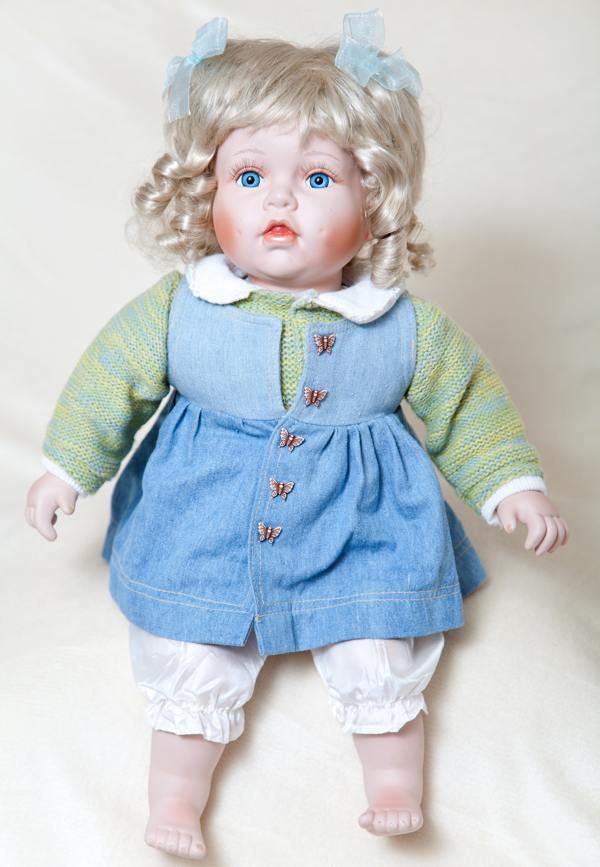
Collecting vintage porcelain dolls is a hobby for some people, but some could also be worth a fortune. Whatever the reason for collecting, it could be a big deal if a genuine antique doll is acquired. This HobbyZeal post tells you how to identify antique porcelain dolls.
Did You Know?
Porcelain dolls originated in France and Germany around 1800. Earlier, dolls were created to look like women. Later, more were made to resemble children.
Antique means something that belongs to an earlier period, fashion, and style. Collecting antique things will be like bringing a piece of history into your house. When the collection comprises vintage porcelain dolls, it is a treat of different hairstyles, clothes, facial expressions, etc. The value ranges according to their time period, maker, and style.
However, it is hard to get your hands on a genuine antique porcelain doll from the 1800s and 1900s. You may not have all the information about different eras, styles, manufacturers, etc. In addition, there is constant reproduction of these dolls, which have similar appearance of the antique dolls. This might make it difficult for you to judge if a doll is genuinely antique or not. However, with a little information at hand, you can identify a vintage doll and add it to your collection.
Body
◆ In earlier times, either whole doll or parts of it were made of porcelain. In later style, mainly the head would be made of porcelain, and remaining body parts would be made in materials like bisque (unglazed porcelain), composition (wood, sawdust, and glue), kid (soft leather), ceramic, cloth, and paper-mache.
◆ The porcelain-made head, neck, and shoulders would have been made in one mold. You can find two holes near the shoulders of doll, which were used to sew head to remaining body.
◆ Compare the head of the doll with the other body parts like the hands and feet. The difference between the two materials used will be noticeable.
◆ The porcelain used in creating the head is easy to recognize. Touch the surface to your teeth. It will feel hard and cold, compared to the other materials.
◆ With age, fine lines are formed on the porcelain surface. These are called crazing or craze lines. For example, dolls with heavy crisscross cracks will be very old.
Other Physical Characteristics
◆ Around the 1800s, some doll makers preferred to use their own children to model their dolls. These dolls will have more real-life looks; and therefore, look different than the other vintage dolls.
◆ Many antique porcelain dolls have a hole cut out on their head. Removing their hair, you can easily peer into this hole.
Color
◆ An antique doll will normally suffer from discoloration. A faded and dull color is the mark of the doll’s old age.
◆ It can be identified with its glazed contraction as well.
Eyes
◆ Before 1870, the eyes were painted on the porcelain dolls. These eyes were usually light-blue in color. Sometimes, black and brown colors were also used to paint the eyes.
◆ From 1870 onwards, porcelain dolls had inset glass eyes. These inset eyes do not move.
◆ In the early 1900s, big round eyes with a sideways glance was in vogue.
Hair
◆ Most antique dolls have painted hair.
◆ The hair would usually be in black, brown, and blonde colors. Red color was thought to be an unlucky color for hair.
◆ However, a majority of antique German porcelain dolls were fitted with wigs, rather than painted hair. These wigs were made from either human hair or mohair.
◆ Wigs were glued to the doll’s head, rather than rooted hair like there is in newer dolls.
◆ Vintage dolls sport different hairstyles, as they belong to different eras of fashion. For example, dolls made between 1840 and 1860 will have a Covered Wagon hairstyle. On the other hand, dolls made in the 1870s will show off a Dolly Madison hairstyle.
Clothes
◆ A porcelain doll’s age can be easily guessed by the condition of its clothes. The clothes will have signs of dust and occasional signs of fading.
◆ Vintage porcelain doll makers never used modern Velcro to fasten the clothes onto the doll.
Manufacture’s Name, Symbol, and Other Numbers
◆ Every doll is marked with the maker’s symbol. This mark will help you identify the genuineness of the doll.
◆ This mark is typically located on the back of the doll’s head, neck, shoulder plates, or on the bottom of its foot.
◆ The mark includes the manufacturer’s name, either spelled out or in symbols. It might also include a number series, which typically constitutes a mold number, patent number, or a date.
◆ You can find out more about the manufacturer by looking up the mark online as well as in a doll collector’s reference book. Many manufacturers have their own website or product catalogs as well.
◆ Matching the markings, you can get the information about the time the doll was made.
Professional Help
◆ If you are still unsure whether the doll is antique porcelain or not, take it to an expert. Take it to a doll appraiser to clear all your doubts. A person who is skilled in doll appraising will definitely be able to help you out.
These pointers will help you determine if your doll is antique or not. In the end, remember that your antique porcelain doll might be in a delicate condition. Even though you may not decide to sell it, you still need to clean the doll for safekeeping. It may not make your doll as good as new, but it will surely help retain the value of your beautiful antique!








